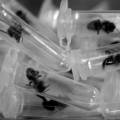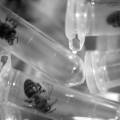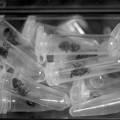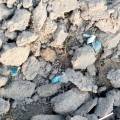This is an old revision of the document!
Neonicotinoïdes

Colony collapse disorder (CCD) is the phenomenon that occurs when the majority of worker bees in a colony disappear and leave behind a queen, plenty of food and a few nurse bees to care for the remaining immature bees and the queen. While such disappearances have occurred throughout the history of apiculture, and were known by various names (disappearing disease, spring dwindle, May disease, autumn collapse, and fall dwindle disease), the syndrome was renamed colony collapse disorder in late 2006 in conjunction with a drastic rise in the number of disappearances of western honeybee colonies.
Several possible causes for CCD have been proposed, but no single proposal has gained widespread acceptance among the scientific community. A large amount of speculation has surrounded a recently introduced family of pesticides called neonicotinoids as having caused CCD. Other suggested causes include: infections with Varroa and Acarapis mites; malnutrition; various pathogens; genetic factors; immunodeficiencies; loss of habitat; changing beekeeping practices; or a combination of factors.
Neonicotinoïdes affect homing and foraging activity of honey bees






